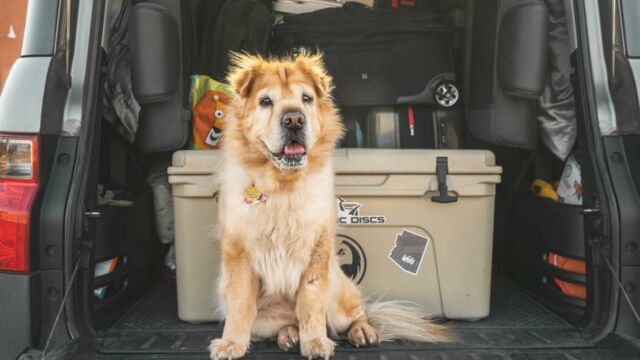Summer is a great time to make memories with your family members, including the very furry ones. Imagine your dog’s head sticking out of the window, ears flapping in the wind. Iconic, right? Wrong! Letting your pet have their head or any part of their body outside of the moving vehicle carries serious risks. Travelling of any kind can be stressful for animals. Follow these specially selected tips that will keep you and your dog safe and comfy on the road.
Discover our latest podcast
Do a bit of rehearsing first
Travelling with your pet is so much more than loading them into the back seat and hitting the gas. ASPCA advises getting your pet geared up for a long trip by taking them on a series of short drives first, then gradually lengthening the time spent in the car. Practise how you will secure your dog’s position in the vehicle.
Give your pet enough space

Your dog should be comfortable throughout the whole duration of the trip so you stay stress-free too. Depending on the size of your dog, make sure they have their own designated spot that smells and looks familiar. Use a seat belt harness, pet carrier, dog cage or dog guard for securing your dog’s position. If your dog stays in a carrier or a crate, they should be secured in case of an abrupt stop and large enough for your pet to stand, sit, lie down and turn around.
It is vital your dog cannot distract you while you are driving.
Be smart with the packing
Prepare a pet-friendly travel kit. Bring food, a bowl, leash, waste bags, grooming supplies, medication, a first-aid kit and any travel documents your pet may need for the duration of both your ride and your time away from home. Also, pack a favourite toy or pillow to give your pet a sense of familiarity. Pack plenty of water. Always opt for bottled water on a road trip. Drinking water from an area they aren’t used to could result in stomach discomfort.
Stick to the feeding schedule
Outside recommends keeping your dogs on the same feeding schedule as at home. This will help to manage their anxiety and maintain the timing of their energy spikes, poops, and complaints about being hungry as predictable as possible.
Offer your dog a fresh bowl of water every time you stop.
Don’t feed the dog while driving as it can make them sick.
Time the bathroom breaks

You probably already know how often your dog needs to go out for its bathroom business. Keep in mind that the time spent in unfamiliar environments, with unfamiliar stimuli, can make even the most regular dog unpredictable. Monitor them for signs of pacing, excessive panting, or whining that may indicate a need to visit a roadside bush.
Watch the temperature!
Keep your vehicle well-ventilated. We all know dogs die in hot cars, but a lot of us are still guilty of underestimating how fast that can happen. Don’t leave your animal alone in a parked vehicle. On a hot day, even with the windows open, a parked vehicle can become a furnace in no time, and heatstroke can develop which may result in death. In cold weather, a car can act as a refrigerator, holding in the cold and causing the animal to freeze to death.
Watch for other dangers
Remember that gasoline, oil, antifreeze, and other chemicals tend to spill over gas station forecourts. They are poisonous to your dog. Keep your dog’s paws away from it.
Read more:
⋙ 5 mind-blowing facts about your dog’s most important organ
⋙ Brushing your dog's teeth: How to make your pet fall in love with this hated task
⋙ Is your dog right- or left-pawed? Here's how you can find out















